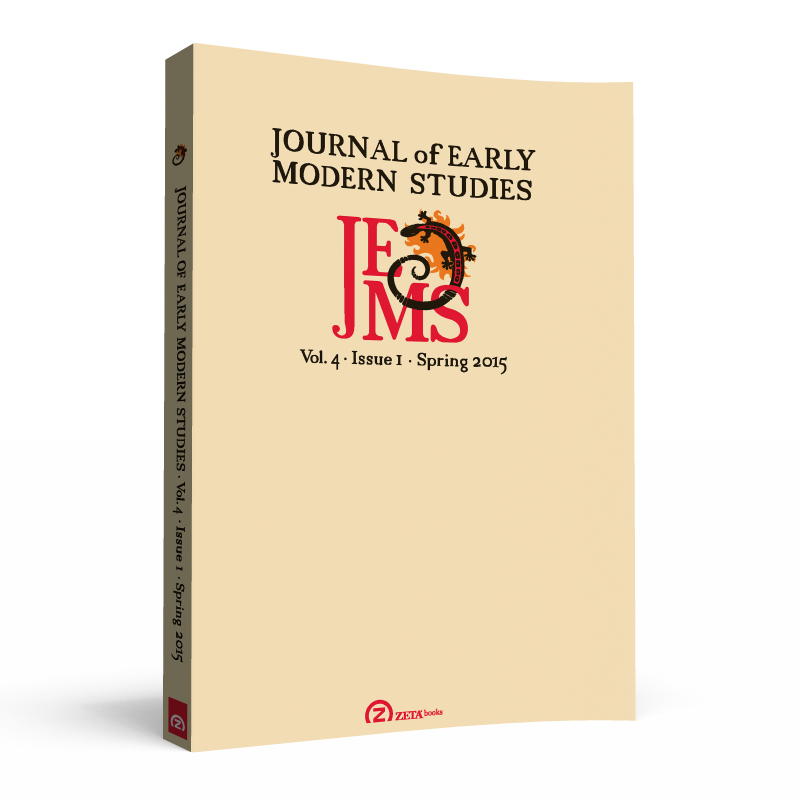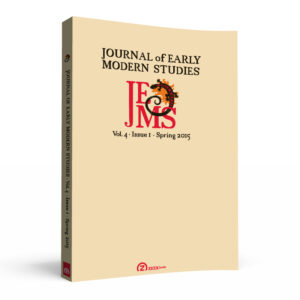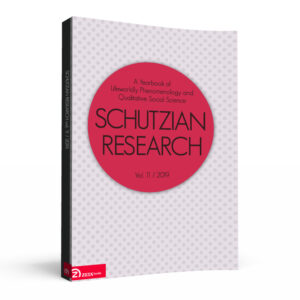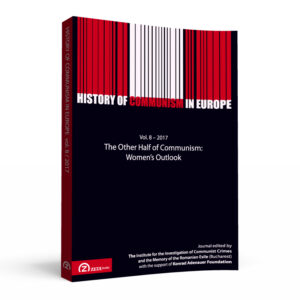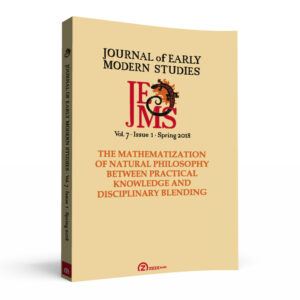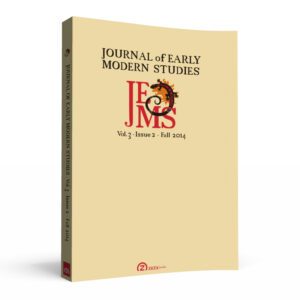ARTICLES
LUÍS MIGUEL CAROLINO, Mixtures, Material Substances and Corpuscles in the Early Modern Aristotelian-Thomistic Tradition. The Case of Francisco Soares Lusitano (1605–1659)
- Abstract: This paper analyzes the theory of mixtures, material substances and corpuscles put forward by the Portuguese Thomistic philosopher Francisco Soares Lusitano. It has been argued that the incapacity of the Aristotelian-Thomistic tradition to reconcile an Aristotelian theory of mixtures with hylomorphism opened the way to the triumph of atomism in the seventeenth century. By analyzing Soares Lusitano’s theory of mixtures, this paper aims to demonstrate that early modern Thomism not only rendered the Aristotelian notion of elements compatible with the metaphysical bases of hylomorphism, but further incorporated an explanation of physical phenomena based upon the notion that bodies were basically made up of small and subtle corpuscles. By doing so, it shows that, contrary to what is so often claimed, early modern corpuscularism was not intrinsically incompatible with late Aristotelian philosophy.
ANNE DAVENPORT, Atoms and Providence in the Natural Philosophy of Francis Coventriensis (1652)
- Abstract: During the Interregnum, English natural philosophers and chymists became deeply interested in Pierre Gassendi’s revival of Epicurean atomism. In the English context, strategies to accommodate atomism to Christian doctrines were fraught with religious and political implications. English Roman Catholics differed from their Protestant compatriots in insisting that God did not cease to operate miracles at the close of the apostolic age. The English friar known as Franciscus a Sancta Clara embraced atomism on the grounds that a new and better science of material causes was indispensable for the accurate assessment of God’s recent and future miracles.
RICHARD DAVIES, Mysterious Mixtures: Descartes on Mind and Body
- Abstract: As is well known, Descartes’ doctrine on the relations of mind and body involves at least the following two theses: (i) the real distinction of mind and body is compatible with their substantial union; and (ii) the siting of the mind at the tip of the pineal gland is compatible with its presence throughout the body. This essay seeks to perform three main tasks. One is to suggest that, so far as Descartes is concerned, the doctrine that arises out of the combination of (i) and (ii) blocks off the problems that are alleged to arise for mind-body interaction. A second is to illustrate how, in a certain vision of Descartes’ thought, (i) and (ii) are more closely connected to each other than is generally explicitly recognised. And a third is to illustrate how one grade of mixture of stuff-types that the ancient Stoics envisaged both provides a model for answering Descartes’ demands and has a reputable pedigree within the tradition to which he was heir.
TZUCHIEN THO, What is (not) Leibniz’s Ontology? Rethinking the Role of Hylomorphism in Leibniz’s Metaphysical Development
- Abstract: A central controversy in the reception of Leibniz’s philosophy, not only during his lifetime, but also in the immediately posthumous period (1720’s) and more recently, concerns the role that substantial forms play in Leibniz’s ontology. Interpreters like Garber argue that the Leibnizian defense of the quasi-Scholastic substantial forms in the 1680’s-1690’s demonstrate an ontology of corporeal substance irreducible to an idealist ontology. On the other hand interpreters like Adams argue that corporeal substances reduce to a fully idealist ontology and that this period in Leibniz’s work only demonstrate a modification of idealism. In this paper I argue that without clarifying the ambiguous status of what constitutes “ontology” for Leibniz, the stakes of this longstanding debate are unclear and the anti-idealist position appears to be a self-defeating one. By turning to a thorough reading of Leibniz’s transition from the middle to the late years and noting key turns in its historical reception (vis à vis Wolff and others), I argue that the anti-phenomenalist position becomes meaningful in light of an idealist ontology rather than in spite of it. My aim is not to defend either idealism or anti-idealism but rather to reconfigure the nature of the controversy concerning substantial forms by outlining the limits of current debates over Leibniz’s ontology.
REVIEW ARTICLE
DANA JALOBEANU, The Toolbox of the Early Modern Natural Historian: Note-Books, Commonplace-Books and the Emergence of Laboratory Records
BOOK REVIEWS
- JAKÓ ZSIGMOND (ed.), Köleséri Sámuel tudományos levelezése 1709-1732, Kolozsvár: Erdélyi Múzeum Egyesület, 2012 (Daniel C. Andersson)
- JUSTIN E. H. SMITH, Divine Machines: Leibniz and the Sciences of Life, Princeton, NJ: Princeton University Press, 2011 (Boris Demarest et al.)
- ÉLODIE CASSAN (ed.), Bacon et Descartes. Genèses de la modernité philosophique, Lyon: ENS Éditions, 2014 (Doina-Cristina Rusu)
- MARCO SGARBI, The Italian Mind. Vernacular Logic in Renaissance Italy (1540-1551), Leiden, Boston: Brill, 2014 (Andrea Sangiacomo)
ISSN: 2285-6382 (paperback)
ISSN: 2286-0290 (electronic)
ISBN: 978-606-697-002-0 (paperback)
ISBN: 978-606-697-003-7 (electronic)

